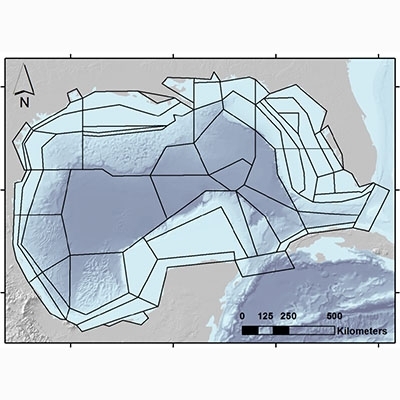
An Atlantis Ecosystem Model for the Gulf of Mexico Supporting Integrated Ecosystem Assessment
The Gulf of Mexico supports a high biological diversity and biomass of fish, seabirds, and mammals; in this region, multiple commercial and recreational fishing fleets operate providing economic resources for local populations. The Gulf is also the site of important oil and gas production and tourism. As a result of intensive human use, the Gulf is subject to various impacts, includig oil spills, habitat degradation, and anoxia. Management of this Large Marine Ecosystem requires an ecosystem-based management approach that provides a holistic approach to resource management. The Gulf of Mexico is managed as part of NOAA’s Integrated Ecosystem Assessment Program (IEA). This program considers the developent of ecosystem models as a tool for ecosystem-based fisheries management (EBFM) and to support the different stages in the IEA process, particularly testing the effects of alternative management scenarios. As part of this program, we have parameterzed an Atlantis ecosysem model for the Gulf of Mexico, including major functional groups, physiographic dynamics, and fishing fleets. The Gulf of Mexico (GOM) Antanis model represents a collaboration between the University of South Florida, the University of Miami, the Southeast Fishereis Science Center, the National Coastal Data Developemnt Center, and other contributors.
The full article is available at the link below:
http://docs.lib.noaa.gov/noaa_documents/NMFS/SEFSC/TM_NMFS_SEFSC/NMFS_SEFSC_TM_676.pdf
Ainsworth, C.H., Schirripa, M.J. and Morzaria-Luna, H. (eds.), (2015). An Atlantis ecosystem model for the Gulf of Mexico supporting Integrated Ecosystem Assessment. US Dept. Comm. NOAA Technical Memorandum NMFS-SEFSC-676. 149 pp.


